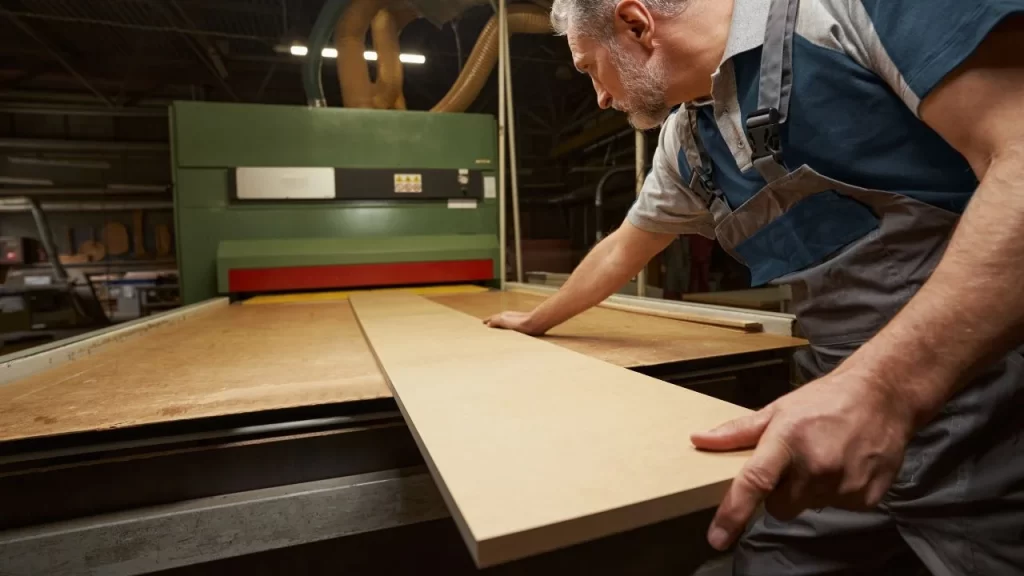Running short boards through a thickness planer can be challenging if you don’t know how to do it properly. The short wood pieces can cause damage to you, the blades, and the overall working of the planer. So, knowing the safest ways to run small-length boards through thickness planers is compulsory. I will guide you on how to do this job without getting any damage.
4 Easy Steps To Run Short Boards Through Thickness Planer
Use a flat board
A flat board is the easiest way to run short wood pieces through a thickness planer. This can help you run multiple small boards simultaneously, and you can easily smooth their surfaces. If you don’t know how to pass these little boards from the thickness planer safely, don’t worry; I will share the whole process. You can follow the given steps to do so.

Step 1: Take a Flat Board
Take a big flat board with enough length so it can easily pass through the infeed and outfeed rollers. It will help you manage several wood pieces at once, and the wood will pass the rollers securely.
Step 2: Put Wood Pieces On the Board
Now, take small pieces of wood that you want to plane; it could be 2, 3, or 4 in number. Put the wood pieces on the board and tape them one by one with the help of carpet tape.
Carpet tape can make a firm grip between the flat board and the other wood pieces; it can also be easily removed when the job is done. You can use the tape on both edges to attach the short wood firmly.
Remove the upper layer of the tape to open the sticky side and put it on the flat board with a little force from your palm. The wood piece will be attached to the board.
Step 3: Get Ready For The Planer
It’s time to put the board into the thickness planer. First, set the height of the planer by moving the crank handle so the blades can smooth the wood properly. When you put the board inside the planer, the depth indicator will help indicate how deep you have to plane the wood. Now, turn On the planer and let the board pass over the rollers.
You can pass the wood board 2 to 3 times to get the required thickness.
Step 4: Remove the Wood Pieces
When you finish planing the wood, take a flathead screwdriver and remove the wood blocks with a gentle force. There will be carpet tape left on the wood; take a sharp blade to remove it. That’s It!
Tips To Run Short Boards Through Thickness Planer
These tips will help you plane the shortest length boards without getting any damage.
Always use a flat and even board: For a smooth job, you always have to use a wood board that is flat and even because it can easily pass through the rollers and never damage the cutter head. Unknowingly, using an even board may damage the cutter head, and you will not get the required thickness.
Properly wax the planer bed: Keep your planer bed waxed so the wood can easily pass over the rollers without getting stuck. I use floor paste wax that works well for me, and I recommend it to you.
Keep the rollers clean: Over time, when you do a lot of work on the thickness planer, some tiny wood pieces or debris get stuck on the rollers, which can disturb the planning process. So, try to clean your planer rollers once a month if you continuously use it. Moreover, please keep checking the rollers every second or third month; it will be good for the overall planer health.
Work with slow feed rate: While planing shortboards, we have to take extra precautions to avoid any severe damage. As all the planer manufacturers recommend, 12 inches the shortest length of the board that you can run through the planer, so you can easily plane that length of wood.
The minimum shortest length of wood pieces you can pass through the thickness planer is 7 inches because I’ve personally tried and safely plane the surface. Below 7 inches may cause damage to the cutter head because the wood can get stuck between the rollers and blades. For more safety, I always recommend keeping the feed rate slow whenever running short boards.
Last words
Planning short boards can be a bit challenging if you are a beginner. But, with this guide, you can perfectly do the job. Additionally, I always follow safety precautions when using the thickness planer and suggest you.
If you find this guide handy, please share it with other woodworkers.
Helpful Guides: